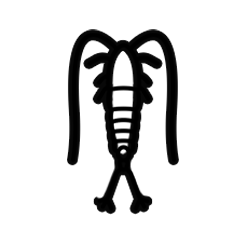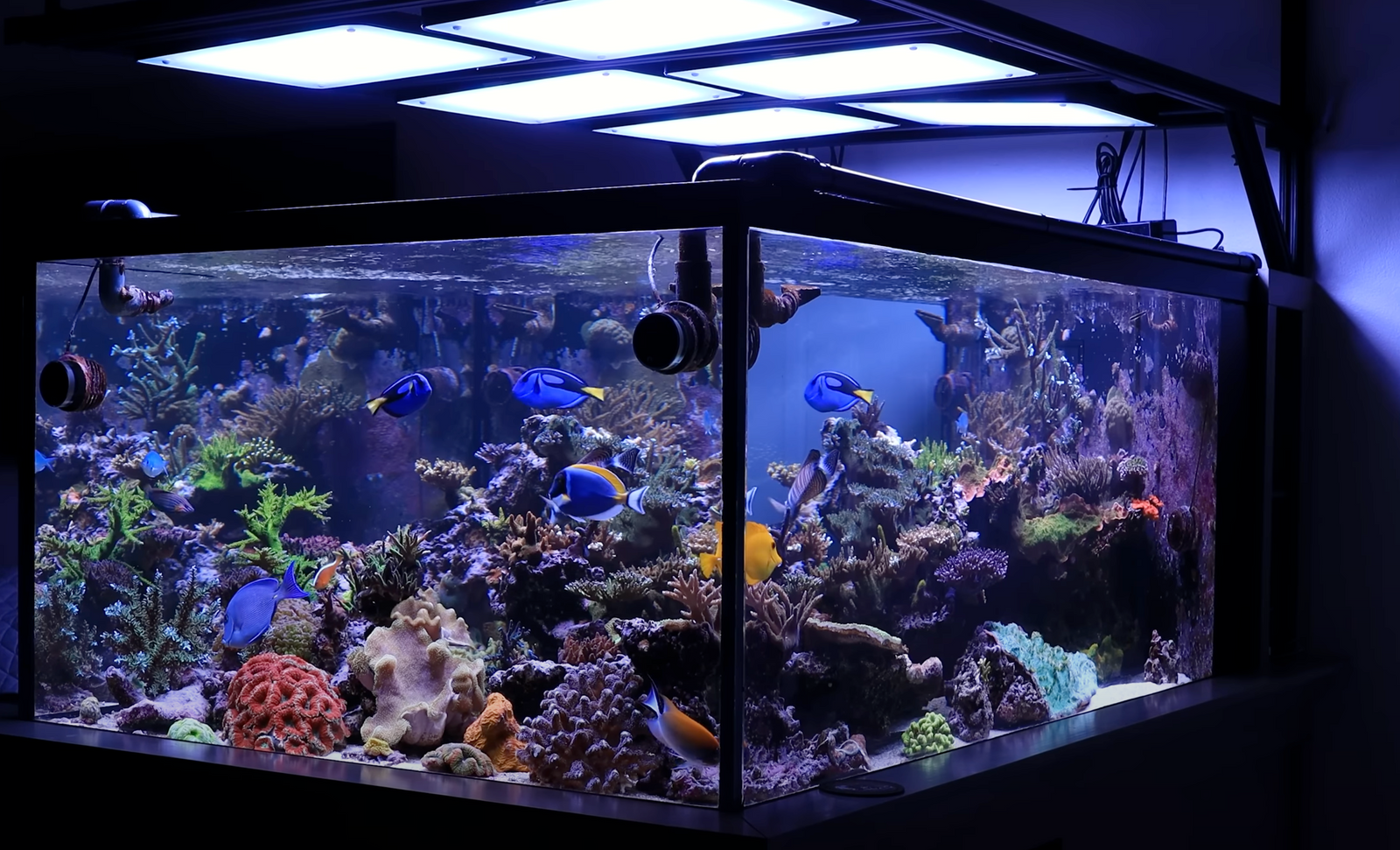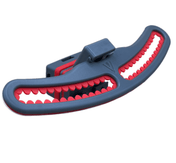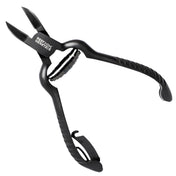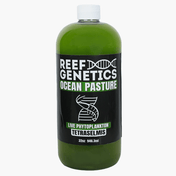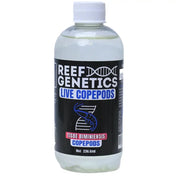Bringing home a new saltwater fish is always an exciting moment, whether you're a beginner setting up your first tank or an experienced hobbyist adding to your collection. But excitement shouldn't overshadow caution—new fish often carry hidden parasites or diseases that, if not properly handled, can quickly spread and devastate your entire aquarium.
Parasites like ich, velvet, Uronema, and flukes frequently hitchhike unnoticed, appearing healthy until stress weakens the fish’s immune system. Unfortunately, these hidden diseases have become increasingly common, and the consequences of skipping quarantine can range from costly to catastrophic. A single unquarantined fish can introduce pathogens capable of infecting and even wiping out your carefully curated tank inhabitants.
This guide provides a clear, practical, step-by-step quarantine process developed from expert insights and widely proven methods. By the end, you’ll know exactly how to quarantine your new fish safely and effectively, significantly reducing risks and helping ensure your aquarium remains vibrant, healthy, and thriving.
Why is Quarantining Saltwater Fish Necessary?
Quarantining saltwater fish isn’t just an extra step—it's a critical part of responsible aquarium management. Even healthy-looking fish frequently carry parasites or pathogens that can remain hidden until stress or changing conditions cause an outbreak. Common parasites such as Ich (Cryptocaryon irritans), Marine Velvet (Amyloodinium ocellatum), Uronema marinum, Brooklynella hostilis, and flukes are often invisible to the naked eye during initial inspection.
When new fish are collected from the ocean and undergo shipping and handling, they experience significant stress, weakening their immune systems and giving dormant parasites a chance to take hold. Without quarantine, these parasites can rapidly spread in your aquarium, quickly infecting previously healthy fish and potentially leading to total tank losses—a situation devastating for both hobbyists and marine life.
Additionally, the quarantine process serves several critical purposes:
-
Observation: Provides a controlled environment to closely monitor new fish for disease symptoms, unusual behaviors, or feeding difficulties.
-
Treatment: Allows safe and effective medication use that would be harmful in display tanks with sensitive corals or invertebrates.
-
Stress Reduction: Enables fish to adapt to captivity gradually, reducing stress levels and strengthening their natural defenses.
While some hobbyists assume quarantine tanks are costly or complicated, the reality is the opposite: a basic quarantine setup is affordable, straightforward, and significantly less expensive than replacing an entire tank's worth of fish and coral.
Ultimately, quarantining helps shift your aquarium practice from crisis management to proactive prevention, saving you time, money, and stress in the long run.
Essential Equipment for a Successful Quarantine Tank
Setting up a quarantine tank doesn't require extensive or complicated equipment, but having the right components from the start makes a big difference in your quarantine success. Below, you'll find a detailed breakdown of exactly what you need to set up an effective quarantine environment for your new saltwater fish.
Tank Recommendations
The ideal quarantine tank size typically ranges between 10 to 40 gallons, depending on the size and quantity of fish you’re quarantining. For smaller fish (under 4 inches), a simple 20-gallon tank usually works perfectly. Larger fish or multiple fish at once will benefit from at least a 30 to 40-gallon tank. The key is to choose the smallest tank practical, making regular maintenance—especially 100% water changes—more manageable.
A quarantine tank should also be set up as a bare-bottom tank, meaning no substrate (sand or gravel) at the bottom. Substrates can trap uneaten food, waste, and parasites, complicating cleanup and potentially promoting parasite reproduction.
Key Equipment Checklist
Here’s exactly what you need for your quarantine tank setup:
-
Tank (10–40 gallons) – Bare-bottom glass or acrylic aquarium.
-
Heater and Thermometer – To maintain stable water temperatures, typically around 78°F.
-
Air Pump and Air Stone – Provides additional oxygenation, critical during medication treatments or parasite infestations.
-
PVC Pipes or Fittings – Simple, non-porous hiding spots to help fish feel safe and reduce stress.
-
Tight-fitting Lid or Screen Top – Prevents stressed fish from jumping out.
-
Basic Aquarium Lighting – Optional, but helpful for clearly observing fish health and behavior without stressing them.
-
Ammonia Alert Badge – Provides constant visual monitoring of ammonia levels, critical between frequent water changes.
Supplies for Mixing Saltwater
Reliable water preparation is crucial because frequent water changes are key to the quarantine process. Here’s what you'll need:
-
Salt Mix (Instant Ocean Recommended) – Non-reef salt mixes are preferable because they avoid elevated calcium, alkalinity, or magnesium levels that complicate medication effectiveness.
-
RO/DI Water – Always use purified water from a trusted RODI unit (0 TDS) to eliminate contaminants.
-
Saltwater Mixing Bin – At least as large as your quarantine tank, allowing for complete water changes.
-
Dedicated Heater for Mixing Container – Ensures consistent temperature between your quarantine tank and new saltwater batches.
-
Siphon, Buckets, and Optional Water Change Pump – Simplifies frequent large water changes.
Medications and Testing Tools
Effective quarantine requires precise medication dosing and regular water testing. These are the essentials you should always have available:
-
Copper Power Medication – Highly recommended and stable copper-based treatment for parasites like ich and velvet.
-
Hanna Copper Checker – Provides accurate copper measurements, critical for safe dosing.
-
Nitrofurazone – Antibacterial medication to proactively manage bacterial infections common during quarantine.
-
Basic Test Kits – Ammonia, nitrite, nitrate, salinity (via refractometer), and temperature checks ensure a healthy and stable environment.
By assembling this straightforward equipment list before you bring home new fish, you'll significantly reduce your quarantine workload and increase the overall health and survival rate of your marine aquarium inhabitants.
Step-by-Step Saltwater Fish Quarantine Protocol
To successfully quarantine saltwater fish, it’s essential to follow a structured and proven procedure. The following step-by-step protocol is designed to manage and effectively reduce the risk of introducing common saltwater aquarium parasites and pathogens, including ich, marine velvet, Uronema, and bacterial infections.
Step 1 – Freshwater and Hyposalinity Dips
Before adding fish to your quarantine tank, start with dips to quickly identify and eliminate certain external parasites:
-
Freshwater Dip (3 minutes)
-
Fill a clean container with temperature-matched (78°F) RO/DI freshwater.
-
Carefully place the fish into the freshwater bath.
-
Gently use a turkey baster or bulb syringe to flush the fish’s body and fins, dislodging visible parasites like flukes.
-
Monitor closely—signs of discomfort are normal briefly, but remove the fish immediately if extreme distress is observed.
-
Fill a clean container with temperature-matched (78°F) RO/DI freshwater.
-
Hyposalinity Dip (3–5 minutes) (optional, but recommended)
-
Immediately after the freshwater dip, transfer fish into a 50/50 mixture of freshwater and saltwater (matched to QT tank temperature and salinity).
-
This intermediate dip helps reduce stress and provides another opportunity to observe parasites.
-
Immediately after the freshwater dip, transfer fish into a 50/50 mixture of freshwater and saltwater (matched to QT tank temperature and salinity).
If flukes or other parasites are visible during dips, note this carefully, as specific treatments will be needed during quarantine.
Step 2 – Setting Up and Medicating the Quarantine Tank
Proper setup and accurate medication dosing are essential. Follow these steps:
-
Prepare Saltwater
-
Mix your preferred salt with RO/DI water to precisely 35 ppt (1.025 SG).
-
Heat water to a stable 78°F.
-
Mix your preferred salt with RO/DI water to precisely 35 ppt (1.025 SG).
-
Add Medications
-
Dose Copper Power at 2.5 ppm concentration. Use a Hanna Copper Checker to ensure precise copper levels. Test multiple times for accuracy.
-
Add Nitrofurazone at 200mg per 10 gallons to proactively treat and prevent bacterial infections.
-
Dose Copper Power at 2.5 ppm concentration. Use a Hanna Copper Checker to ensure precise copper levels. Test multiple times for accuracy.
-
Finalize Setup
-
Add simple PVC fittings for fish hiding spaces, set your heater, and ensure the air stone is running for adequate oxygenation.
-
Confirm temperature and salinity again before adding fish.
-
Add simple PVC fittings for fish hiding spaces, set your heater, and ensure the air stone is running for adequate oxygenation.
Step 3 – Introducing Fish to Quarantine
Once your quarantine tank is medicated and stable:
-
Transfer fish directly into the QT tank from their hyposalinity dip—no additional acclimation needed to prevent medication dilution.
-
Clearly mark the start date of your 15-day quarantine period. Keeping accurate records simplifies monitoring and helps ensure no symptoms go unnoticed.
Step 4 – Performing Regular 100% Water Changes
Every three days during the quarantine period, perform a complete water change:
-
Transfer Fish Carefully: Gently net fish into a clean specimen container filled with water from your quarantine tank.
-
Drain and Rinse: Completely drain the quarantine tank, rinse thoroughly with fresh RO/DI water, and wipe clean with a paper towel.
-
Refill with Fresh Saltwater: Add newly mixed saltwater, medicated to correct levels of Copper Power (2.5 ppm) and Nitrofurazone (200mg per 10 gallons).
-
Return Fish to Tank: Move fish gently back into the clean, freshly medicated tank.
Regular water changes ensure ammonia stays low, remove waste and pathogens, and maintain effective medication concentrations.
Step 5 – The 15-Day Observation Period
The quarantine observation period is critical:
-
Monitor fish daily for signs of illness: spots, rapid breathing, lethargy, or discoloration.
-
No feeding for the first 3 days—this reduces waste and ammonia spikes.
-
After 3 days, feed sparingly, immediately removing leftover food.
-
Reset the 15-day countdown if any symptoms appear. Your goal is 15 consecutive days of symptom-free observation.
-
Maintain thorough records: document daily observations, medication dosing, and water changes.
Following these steps closely will give your new fish the best possible start, greatly reducing the risk of illness spreading to your display aquarium.
Special Considerations for Sensitive Fish
Certain saltwater fish, such as Wrasses, Anthias, and other delicate species, are especially sensitive to common quarantine medications—particularly copper-based treatments. To safely quarantine these sensitive fish, special care must be taken to slowly introduce medications and closely monitor fish behavior and stress levels.
Gradually Increasing Copper Levels
When quarantining copper-sensitive species, never add the full recommended dose of copper immediately. Instead, follow this gradual dosing method:
1. Start with a Low Dose (25%)
-
Initially dose only 25% of the recommended Copper Power dosage (approximately 0.6 ppm instead of the full 2.5 ppm).
-
Carefully measure copper levels with a reliable tool, such as a Hanna Copper Checker, to ensure precision.
2. Observation Period (24–48 hours)
-
Closely watch fish for signs of stress, such as heavy breathing, erratic swimming, color loss, or lethargy.
-
If signs of stress appear, pause dosing and allow the fish to recover before proceeding.
3. Increase Copper Gradually
-
If fish appear comfortable, slowly increase copper dosage by another 25% every 24 hours until reaching the full therapeutic dose of 2.5 ppm over approximately 4 days.
-
Continuously test copper concentrations throughout the ramp-up process, ensuring consistent and safe medication levels.
Alternative Methods: Hyposalinity Treatment
If your fish consistently show signs of distress during copper treatment, consider hyposalinity as a gentler alternative:
-
Reduce Salinity Gradually
-
Slowly lower the quarantine tank’s salinity over several days to approximately 1.010 SG.
-
Maintain this low-salinity environment for a minimum of 4 weeks to effectively manage parasites like ich and velvet.
-
Slowly lower the quarantine tank’s salinity over several days to approximately 1.010 SG.
-
Monitor Carefully
-
Continuously monitor fish for signs of stress or changes in behavior during this period.
-
When ready to end quarantine, gradually raise salinity back to display-tank levels (1.025 SG) over several days to prevent osmotic shock.
-
Continuously monitor fish for signs of stress or changes in behavior during this period.
Extra Precautions for Sensitive Fish
-
Minimize Stress: Maintain low lighting, minimal human interaction, and stable tank conditions.
-
Provide Additional Oxygen: Always use an air stone or increased surface agitation to keep dissolved oxygen high, particularly important when fish are stressed or medicated.
-
Careful Observation: Vigilantly monitor behavior and physical condition daily. Immediate intervention upon signs of stress or illness is critical to fish survival.
By following these additional precautions and specialized methods, you can successfully quarantine sensitive saltwater species, keeping your aquarium safe without unnecessary risk.
Transitioning Fish to Your Main Display Tank
Successfully completing the quarantine period is a significant milestone—but there’s one final important step before introducing your new fish to your display aquarium. Carefully transitioning quarantined fish helps ensure a smooth acclimation process and prevents residual medications or pathogens from entering your primary tank.
Perform a Final Clean Saltwater Rinse
Even after a thorough quarantine, fish can have traces of medications like copper and Nitrofurazone on their skin or fins. To eliminate these residual chemicals, follow this straightforward rinsing process:
1. Prepare Clean Saltwater
-
Salinity: 35 ppt (1.025 SG)
-
Temperature: approximately 78°F
-
pH: match your display tank closely
-
Mix fresh saltwater matching the exact conditions of your display tank:
2. Rinsing Process (3–5 minutes)
-
Place your fish into this clean saltwater bath for 3–5 minutes.
-
This brief soak gently rinses away any residual medications and minor external contaminants, providing one last opportunity to visually inspect the fish closely for remaining signs of illness or parasites.
Final Visual Check
-
During this rinse, carefully examine your fish once more:
-
Look closely for external signs of parasites, such as spots, lesions, redness, or abnormal swimming behavior.
-
Ensure fish appear alert, active, and free from distress.
-
Look closely for external signs of parasites, such as spots, lesions, redness, or abnormal swimming behavior.
Introducing Fish to the Display Aquarium
After the final rinse and visual inspection, your fish are ready to enter their new home:
1. Gentle Transfer
-
Use a clean net to gently transfer fish directly from the rinse container into your main display tank.
-
Avoid adding the rinse water to your display aquarium.
2. Observation Period
-
Closely monitor newly introduced fish for the first several days, ensuring they acclimate well to the environment, tankmates, and feeding routine.
-
Pay close attention to their behavior, appetite, and overall health, intervening early if you notice any stress or aggression issues.
Tips for Reducing Stress During Transition
-
Introduce fish during low-light periods (e.g., evening) when existing tank inhabitants are calmer and less aggressive.
-
Ensure your display tank has ample hiding spaces, such as rocks, caves, and corals, to help newcomers feel secure.
-
Avoid overcrowding; introduce fish gradually rather than in large groups to reduce territorial conflicts.
Taking these careful final steps ensures a smoother, stress-free transition for your quarantined fish, promoting long-term health and harmony within your saltwater aquarium.
Avoiding Common Quarantine Mistakes
Quarantining fish is straightforward, but even small missteps can significantly reduce its effectiveness. Understanding and avoiding these common quarantine mistakes will dramatically improve your success rate and help protect your aquarium from unexpected problems.
1. Skipping or Shortening the Quarantine Process
-
Mistake: Introducing fish directly into your display aquarium or cutting quarantine short.
-
Why it’s problematic: Parasites and diseases can incubate silently, appearing healthy until it’s too late.
-
Best practice: Always quarantine for at least 15 consecutive symptom-free days. If symptoms appear, reset the clock and quarantine for another full period.
2. Mixing Different Quarantine Methods or Medications
-
Mistake: Combining methods from multiple quarantine protocols or randomly mixing medications.
-
Why it’s problematic: Each medication and protocol is specifically designed; mixing them can cause ineffective treatments, increased fish stress, or even toxic interactions.
-
Best practice: Stick strictly to one proven quarantine method and recommended medications (e.g., Copper Power and Nitrofurazone). Follow dosage instructions carefully and measure precisely using reliable testing tools.
3. Overstocking or Undersizing Your Quarantine Tank
-
Mistake: Trying to quarantine too many fish simultaneously or using a tank that is too small for the fish’s size.
-
Why it’s problematic: Overstocking leads to rapid ammonia buildup, stress, oxygen depletion, and ineffective medication management.
-
Best practice: Use appropriately sized tanks (generally 10–40 gallons, larger for multiple fish or larger species). Quarantine fewer fish at a time and maintain manageable water quality through frequent, thorough water changes.
4. Not Monitoring Copper Levels Accurately
-
Mistake: Guessing copper concentration or relying on imprecise test kits.
-
Why it’s problematic: Incorrect copper levels can either fail to eliminate parasites or poison sensitive fish.
-
Best practice: Always use precise copper measurement tools (e.g., Hanna Copper Checker) and consistently maintain the therapeutic concentration of 2.5 ppm Copper Power throughout quarantine.
5. Ignoring Subtle Symptoms or Behavior Changes
-
Mistake: Overlooking subtle signs such as decreased appetite, hiding, lethargy, or mild discoloration.
-
Why it’s problematic: Minor signs often precede major outbreaks; ignoring these early warnings can lead to severe infections spreading throughout the quarantine tank.
-
Best practice: Carefully observe fish daily and record observations clearly. Immediately address subtle symptoms, resetting your quarantine timeline if illness appears.
6. Failing to Maintain Strict Water Quality
-
Mistake: Neglecting regular water changes, ammonia monitoring, or salinity and temperature consistency.
-
Why it’s problematic: Poor water quality weakens fish immune systems, reducing quarantine effectiveness and potentially worsening diseases.
- Best practice: Perform meticulous 100% water changes every three days. Maintain consistent temperature (around 78°F) and salinity (1.025 SG), and regularly test ammonia, nitrite, and nitrate levels.
FAQs – Quick Tips for Successful Quarantine
Even experienced hobbyists have questions about quarantining saltwater fish. Here are clear, practical answers to some of the most commonly asked quarantine-related questions.
Q1: Do I always need to quarantine every new fish?
Yes. Every new fish should be quarantined, even if it appears healthy. Parasites and pathogens can remain hidden or dormant until stress or environmental changes trigger an outbreak. Quarantining consistently protects your established fish from unseen threats.
Q2: Can I quarantine multiple fish together?
Yes—but carefully. Multiple fish can be quarantined simultaneously if the tank size is appropriate, water quality is maintained, and fish compatibility is carefully considered. Generally, limit the number of fish per quarantine tank, and closely monitor them for aggression or stress signs.
Q3: How can I prevent ammonia spikes in my quarantine tank?
-
Frequent 100% water changes: Every 3 days helps remove waste, uneaten food, and ammonia buildup.
-
Minimal feeding: Feed sparingly, starting after the third day, immediately removing any leftovers.
-
Ammonia Alert badges: Provide constant visual monitoring, allowing quick intervention at the first sign of ammonia spikes.
Q4: Is copper medication safe for all fish?
No. While copper medications like Copper Power are highly effective against many parasites, some species—especially wrasses, anthias, and certain angelfish—are highly sensitive to copper. For these sensitive fish, introduce copper gradually or consider alternative methods like hyposalinity treatment.
Q5: Can corals or invertebrates be quarantined with fish?
No. Corals and invertebrates typically can’t tolerate copper or most medications used for fish quarantine. Always quarantine fish separately. Corals and invertebrates require a separate quarantine process specifically tailored to their needs.
Q6: Do I need biological filtration in my quarantine tank?
Not necessarily. While traditional filtration can help maintain water quality, frequent 100% water changes eliminate the need for established biological filtration. If you prefer filtration, use non-porous, inert materials like plastic bio-balls that won’t absorb medications.
Q7: What if a fish shows signs of illness during quarantine?
Immediately reset your 15-day quarantine clock and continue treatments. Keep detailed records of symptoms and treatments. Adjust medications if necessary and continue quarantine until at least 15 consecutive symptom-free days are achieved.
Conclusion – Building Good Habits for Healthier Fish
Quarantining your saltwater fish is more than just an extra step—it’s a crucial practice for maintaining a vibrant, disease-free aquarium. While it might seem time-consuming initially, the long-term benefits of preventing devastating outbreaks far outweigh the effort.
By consistently following this straightforward, structured quarantine protocol—using proper tank setups, precise medication dosing, and vigilant observation—you significantly reduce risks and promote healthier, longer-lived aquarium inhabitants. Over time, quarantining becomes second nature, seamlessly integrated into your aquarium routine.
Ultimately, good quarantine habits protect not only your investment but also the health and vitality of the marine life under your care. Make quarantine a regular part of your aquarium practice, and you’ll enjoy a more successful and rewarding experience in the saltwater aquarium hobby.
Once your quarantine process is in place, explore our collection of healthy, vibrant saltwater fish for sale to safely stock your tank.



